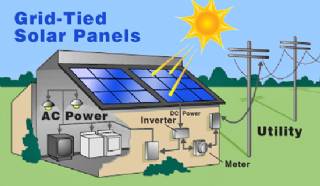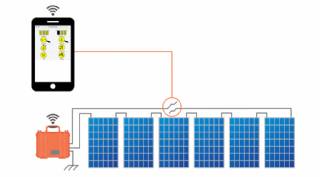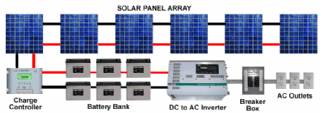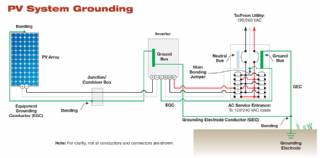How Flash Memory Card Works?

Electronic memory comes in a variety of forms to serve a variety of purposes. Flash memory is used for easy and fast information storage in such devices as digital cameras and home video game consoles. It is used more as a hard drive than as RAM. In fact, Flash memory is considered a solid state storage device. Solid state means that there are no moving parts -- everything is electronic instead of mechanical.
Here are a few examples of Flash memory:
• Your computer's BIOS chip
• CompactFlash (most often found in digital cameras)
• SmartMedia (most often found in digital cameras)
• Memory Stick (most often found in digital cameras)
• PCMCIA Type I and Type II memory cards (used as solid-state disks in laptops)
• Memory cards for video game consoles
In this article, we'll find out how Flash memory works and look at some of the forms it takes and types of devices that use it.
The Basics We discussed the underlying technology of Flash memory in How ROM Works, but here's a quick review:
Flash memory is a type of EEPROM chip. It has a grid of columns and rows with a cell that has two transistors at each intersection (see image below). The two transistors are separated from each other by a thin oxide layer. One of the transistors is known as a floating gate, and the other one is the control gate. The floating gate's only link to the row, or wordline, is through the control gate. As long as this link is in place, the cell has a value of 1. To change the value to a 0 requires a curious process called Fowler-Nordheim tunneling.
Tunneling is used to alter the placement of electrons in the floating gate. An electrical charge, usually 10 to 13 volts, is applied to the floating gate. The charge comes from the column, or bitline, enters the floating gate and drains to a ground.
This charge causes the floating-gate transistor to act like an electron gun. The excited electrons are pushed through and trapped on other side of the thin oxide layer, giving it a negative charge. These negatively charged electrons act as a barrier between the control gate and the floating gate. A special device called a cell sensor monitors the level of the charge passing through the floating gate. If the flow through the gate is greater than 50 percent of the charge, it has a value of 1. When the charge passing through drops below the 50-percent threshold, the value changes to 0. A blank EEPROM has all of the gates fully open, giving each cell a value of 1.
The electrons in the cells of a Flash-memory chip can be returned to normal ("1") by the application of an electric field, a higher-voltage charge. Flash memory uses in-circuit wiring to apply the electric field either to the entire chip or to predetermined sections known as blocks. This erases the targeted area of the chip, which can then be rewritten. Flash memory works much faster than traditional EEPROMs because instead of erasing one byte at a time, it erases a block or the entire chip, and then rewrites it.
You may think that your car radio has Flash memory, since you are able to program the presets and the radio remembers them. But it is actually using Flash RAM. The difference is that Flash RAM has to have some power to maintain its contents, while Flash memory will maintain its data without any external source of power. Even though you have turned the power off, the car radio is pulling a tiny amount of current to preserve the data in the Flash RAM. That is why the radio will lose its presets if your car battery dies or the wires are disconnected.
In the following sections, we will concentrate on removable Flash memory products.
Labels
sd card for phoneHow Flash Memory Card Works?what is flash memorysd card 32gb32gb micro sd card512gb micro sdfastest micro sd cardlargest micro sd cardhow does flash storage workhow flash drives workbest micro sd card for cell phonebest memory card for dslr cameraFarming Principle: Deep Soil Preparation
Looking at GB as a three-legged stool, deep soil preparation is one of the legs. Deep soil preparation builds soil and soil structure by loosening the soil to a depth of 24 inches (60 cm). Ideal soil structure has both pore space for air and water to move freely and soil particles that hold together nicely.

Smart Home Ecosystem - Smart Home Automation - Smart Home Security - Smart Home Technology
The outer-most level corresponds to the individual devices and sensors that consumers interact with. Several candidates are vying for the role of a leader introducing smart home services to the mass market.

Solar Energy Systems - Solar Modules - Solar Electric System Design - Solar Power
The heart of a photovoltaic system is the solar module. Many photovoltaic cells are wired together by the manufacturer to produce a solar module. When installed at a site, solar modules are wired together in series to form strings. Strings of modules are connected in parallel to form an array.
Solar Energy Systems - Array Mounting Racks - Solar Ray - Solar Panel - PV Racks and Mounts
Arrays are most commonly mounted on roofs or on steel poles set in concrete. In certain applications, they may be mounted at ground level or on building walls. Solar modules can also be mounted to serve as part or all of a shade structure such as a patio cover. On roof-mounted systems, the PV array is typically mounted on fixed racks, parallel to t

Solar Energy Systems - Grounding Equipment
Grounding equipment provides a well-defined, low-resistance path from your system to the ground to protect your system from current surges from lightning strikes or equipment malfunctions. Grounding also stabilizes voltages and provides a common reference point. The grounding harness is usually located on the roof.

Solar Energy Systems - Solar Inverter - Solar Panel Inverter
Most grid-connected inverters can be installed outdoors, while most off-grid inverters are not weatherproof. There are essentially two types of grid-interactive inverters: those designed for use with batteries and those designed for a system without batteries.

Solar Energy Systems - Solar Disconnects
Automatic and manual safety disconnects protect the wiring and components from power surges and other equipment malfunctions. They also ensure the system can be safely shut down and system components can be removed for maintenance and repair.

Solar Energy Systems - Solar Battery Bank
Batteries store direct current electrical energy for later use. This energy storage comes at a cost, however, since batteries reduce the efficiency and output of the PV system, typically by about 10 percent for lead-acid batteries. Batteries also increase the complexity and cost of the system.

Solar Energy Systems - Solar Charge Controller
A charge controller, sometimes referred to as a photovoltaic controller or battery charger, is only necessary in systems with battery back-up. The primary function of a charge controller is to prevent overcharging of the batteries. Most also include a lowvoltage disconnect that prevents over-discharging batteries. In addition, charge controllers pr

Solar Energy Systems - The NEC and PV Systems
Solar PV systems must be installed in accordance with Article 690 of the National Electric Code, which specifically deals with PV systems, as well as several other articles of the NEC that pertain to electrical systems in general. When there is a conflict between NEC 690 and any other article, NEC 690 takes precedence due to the unique nature of PV